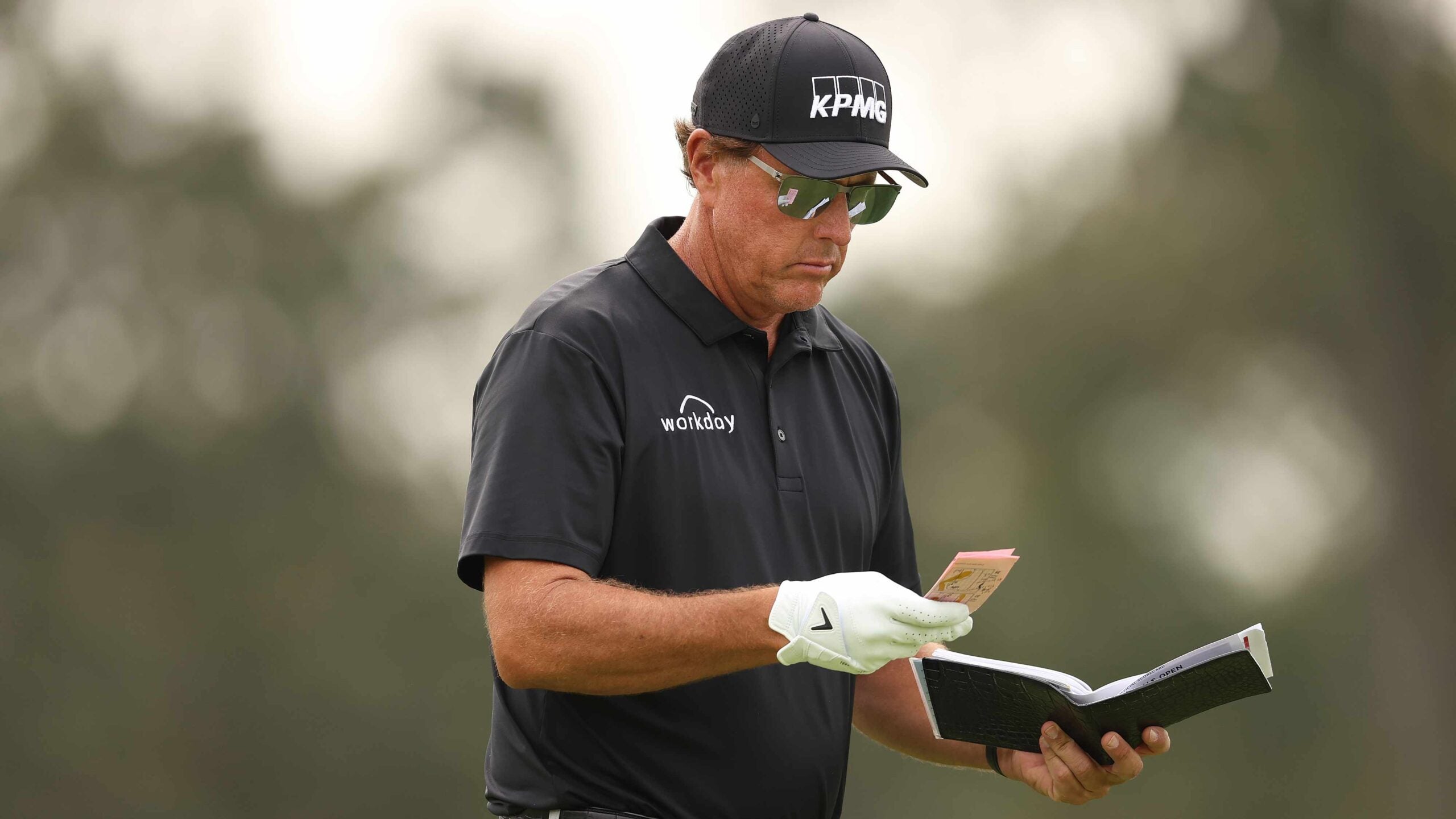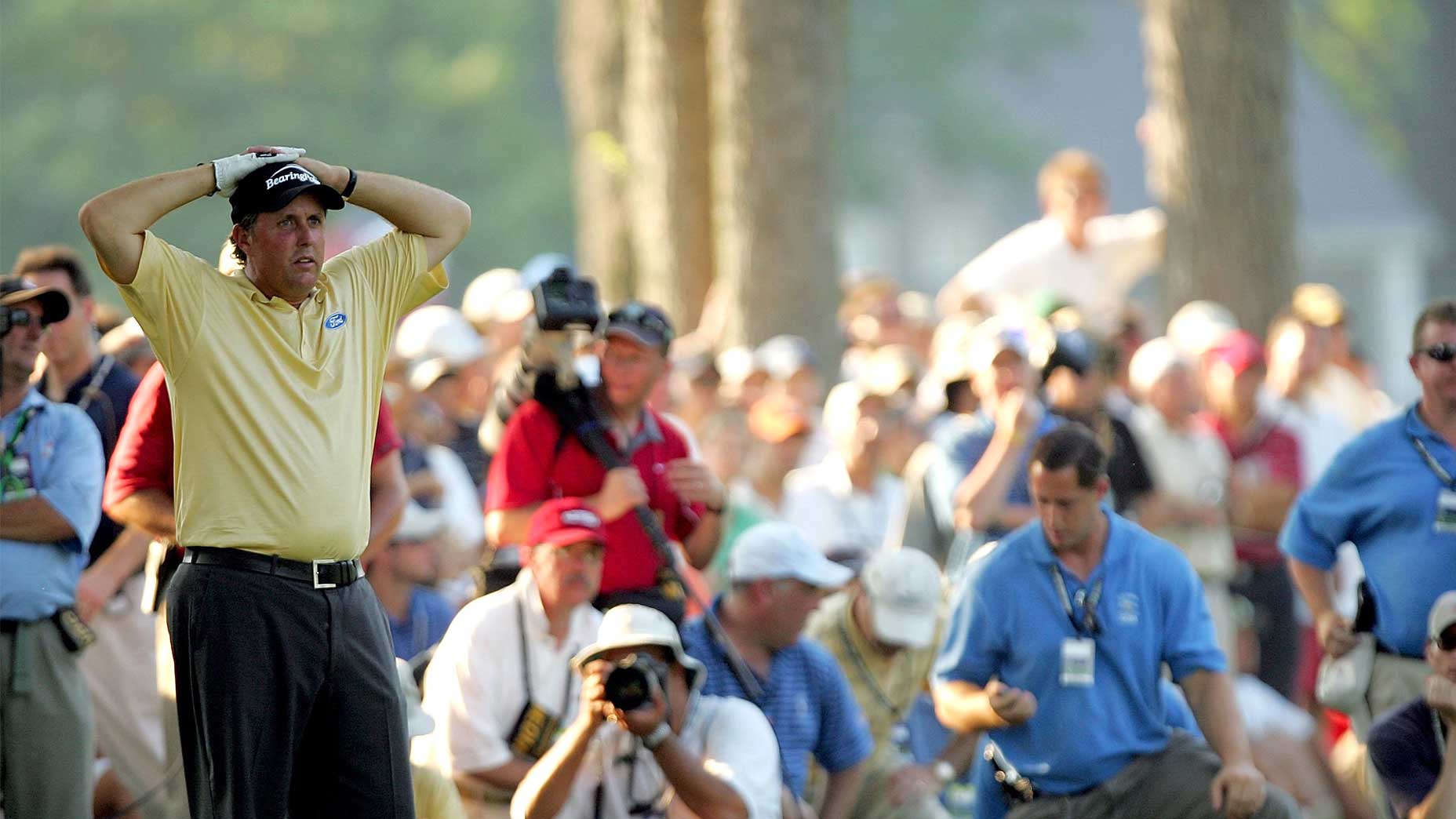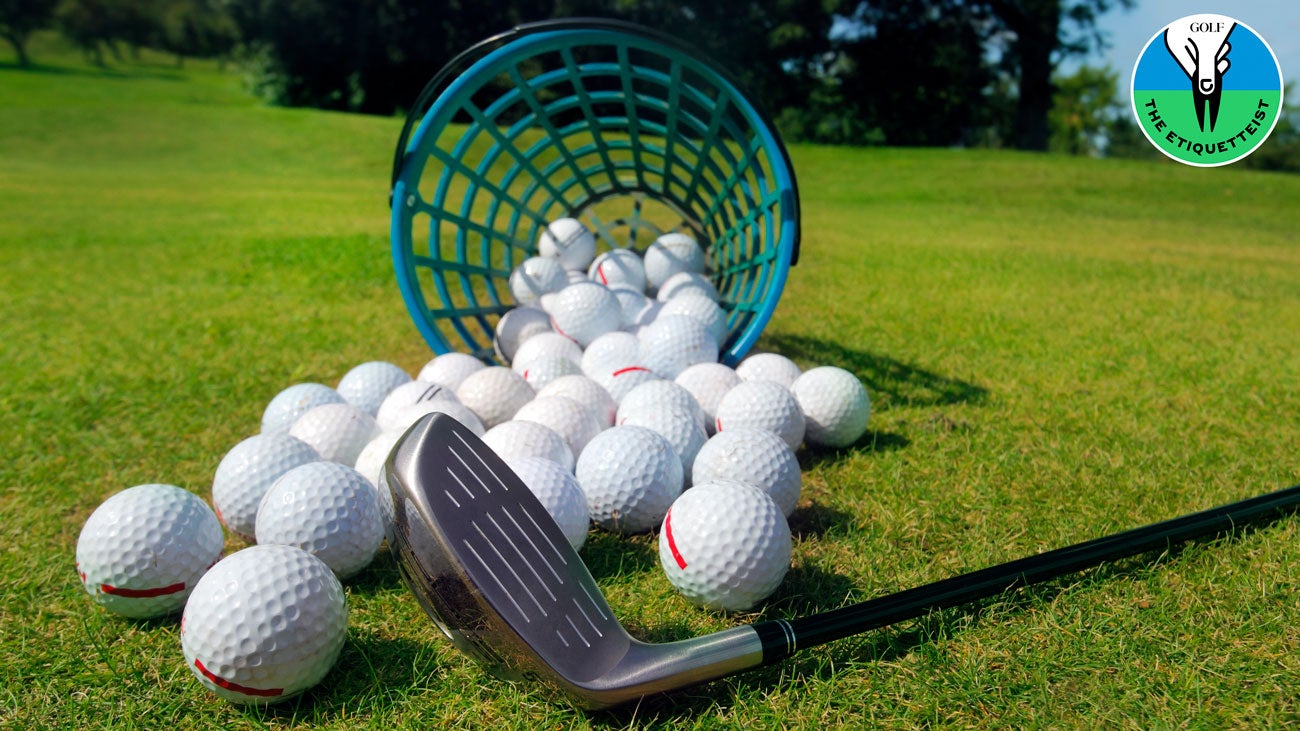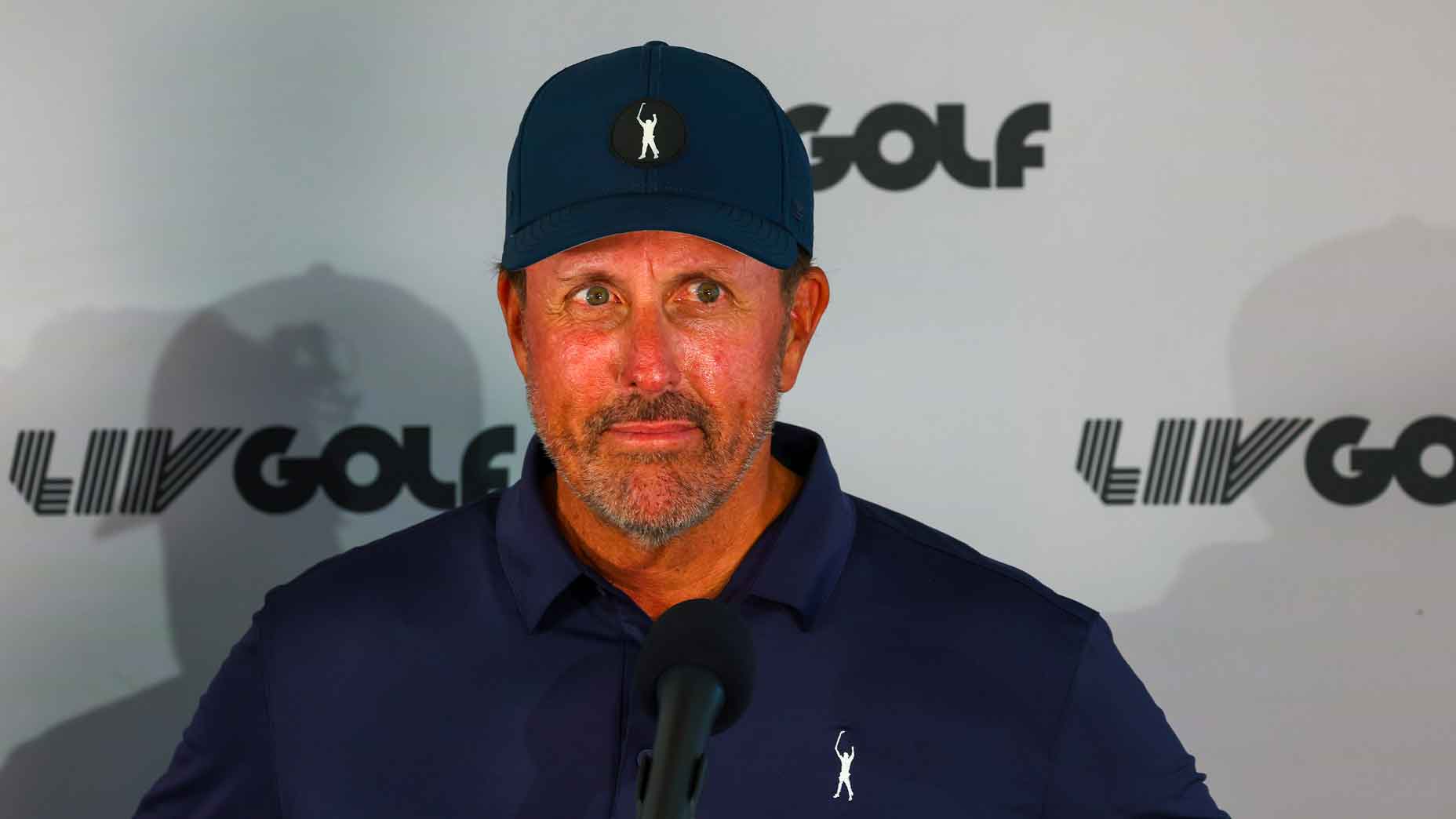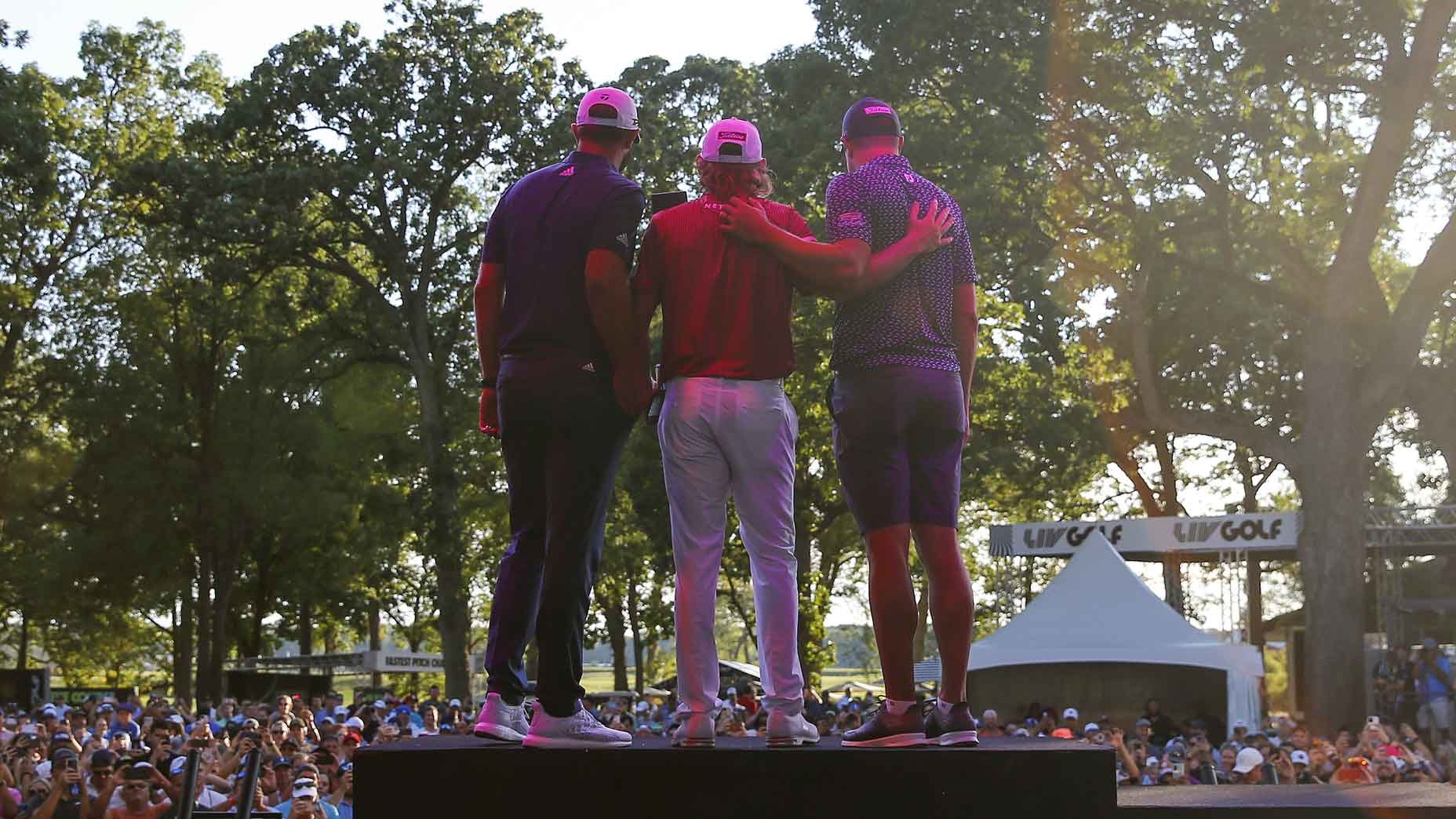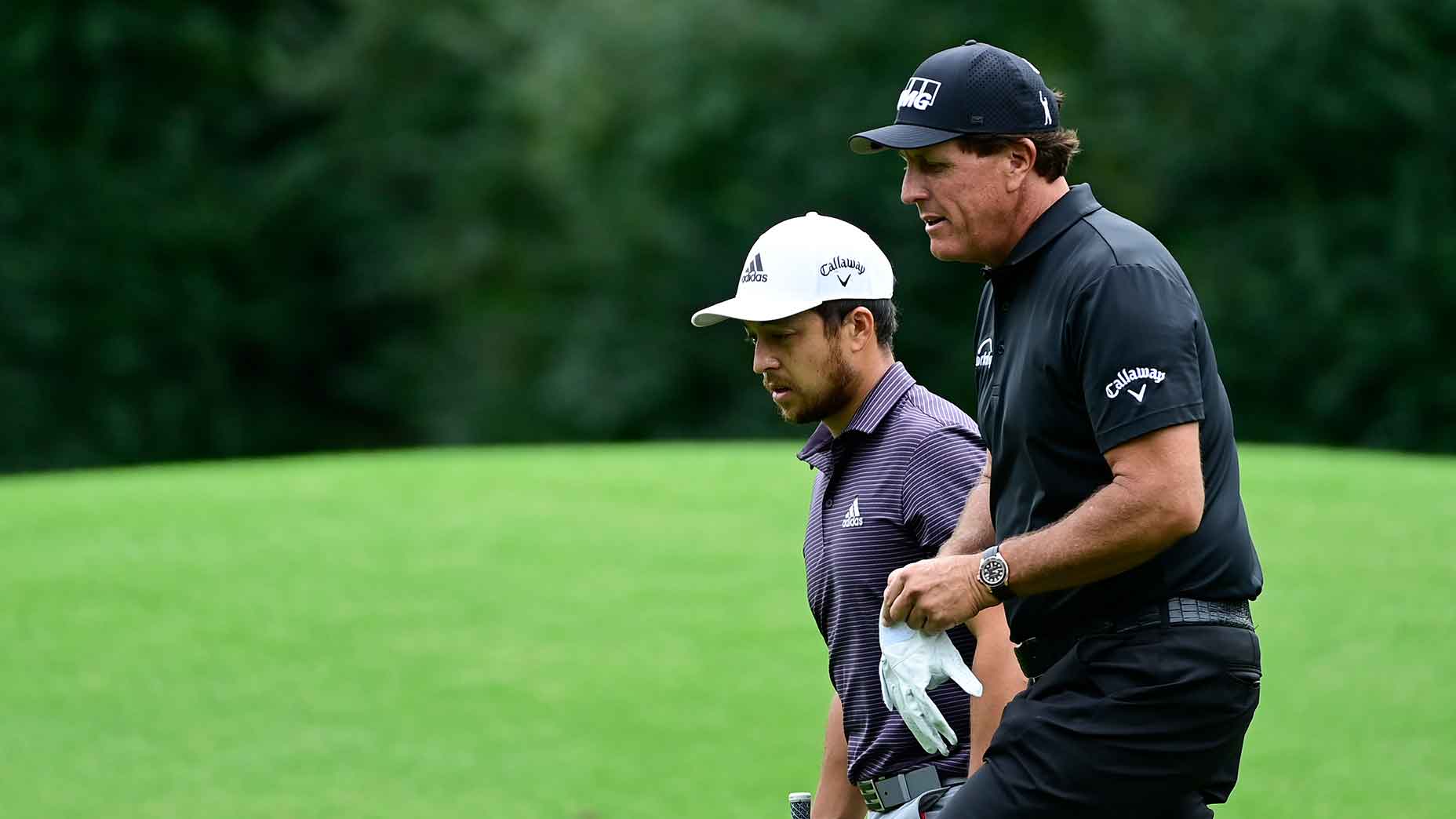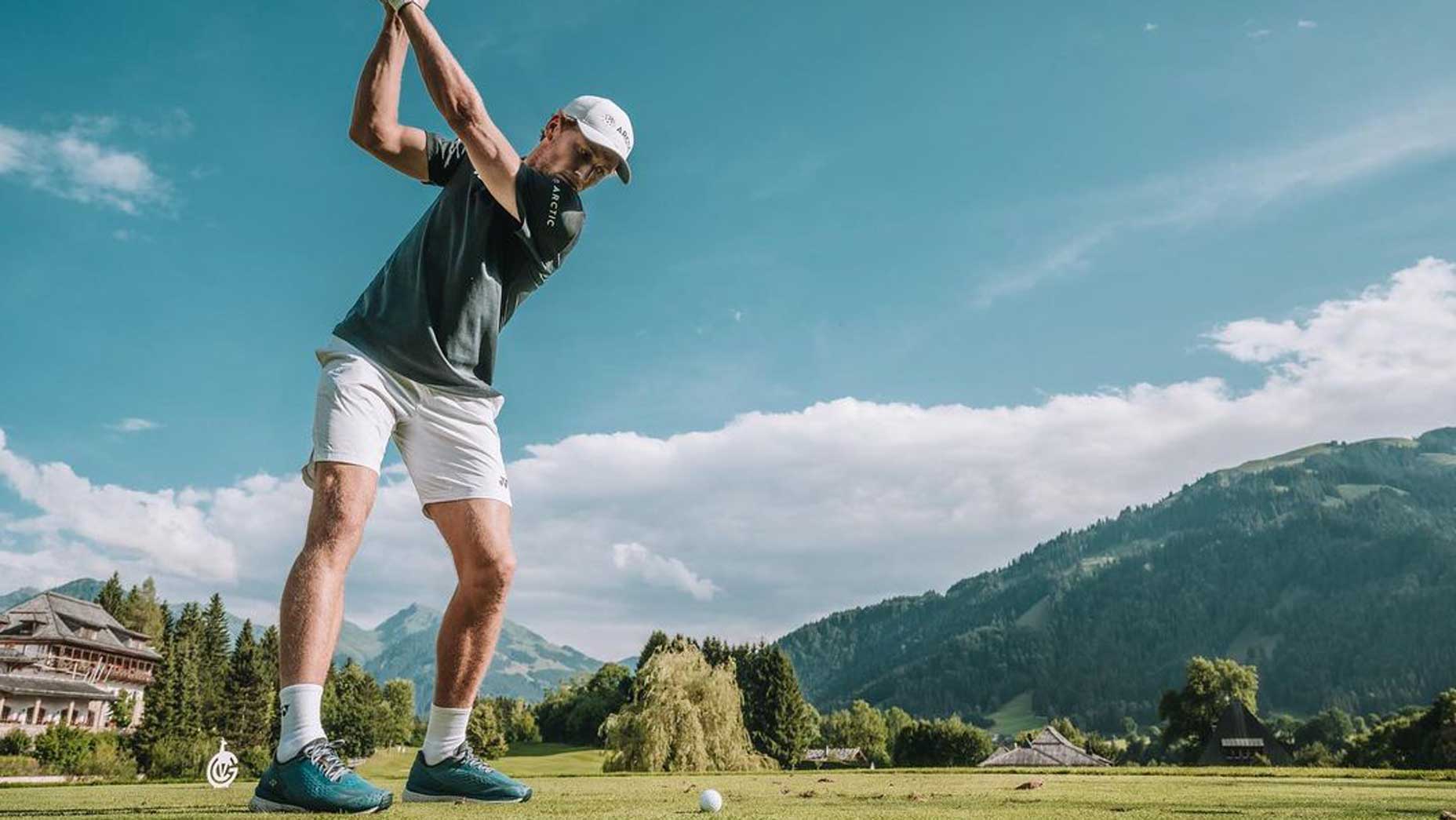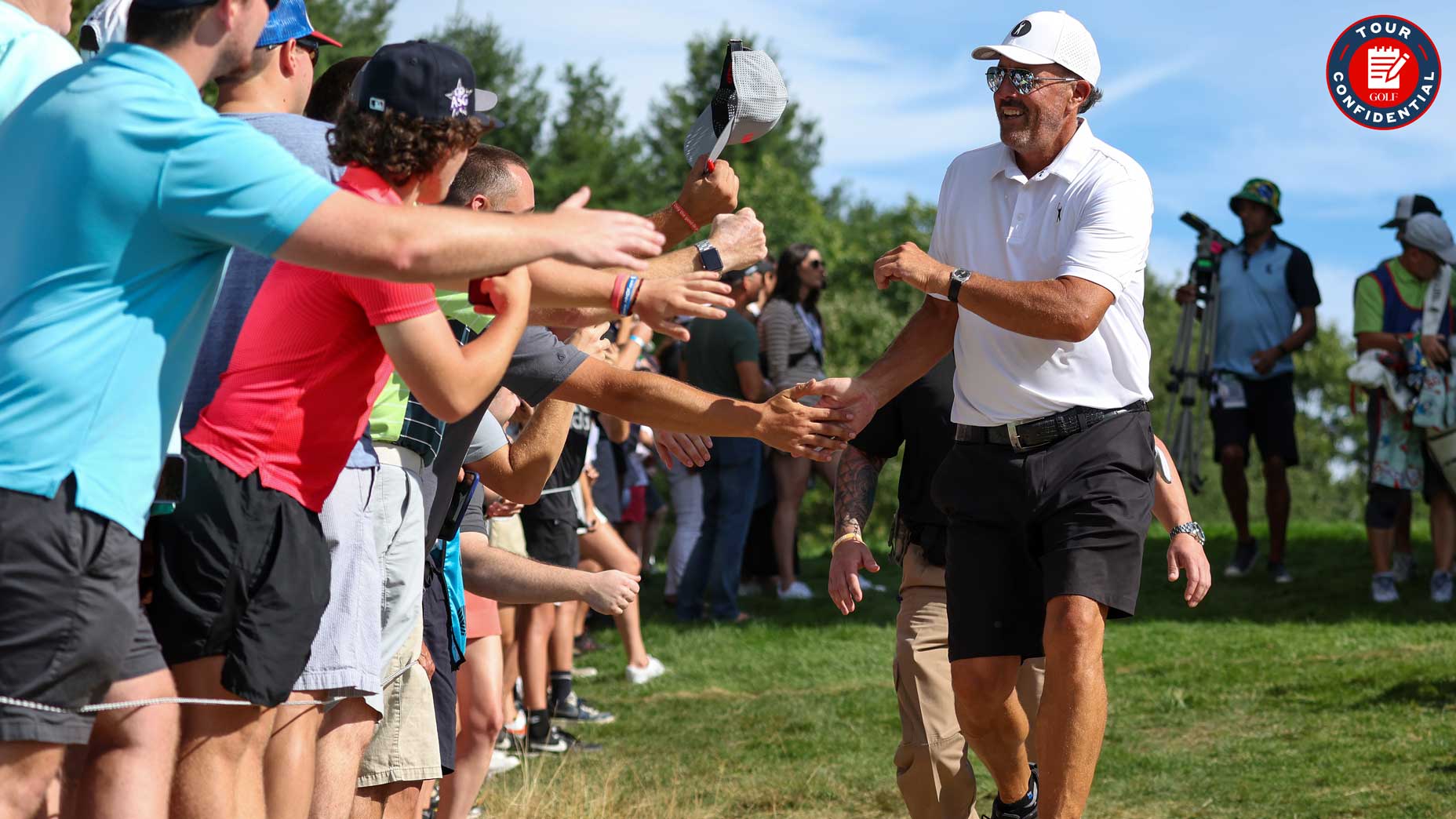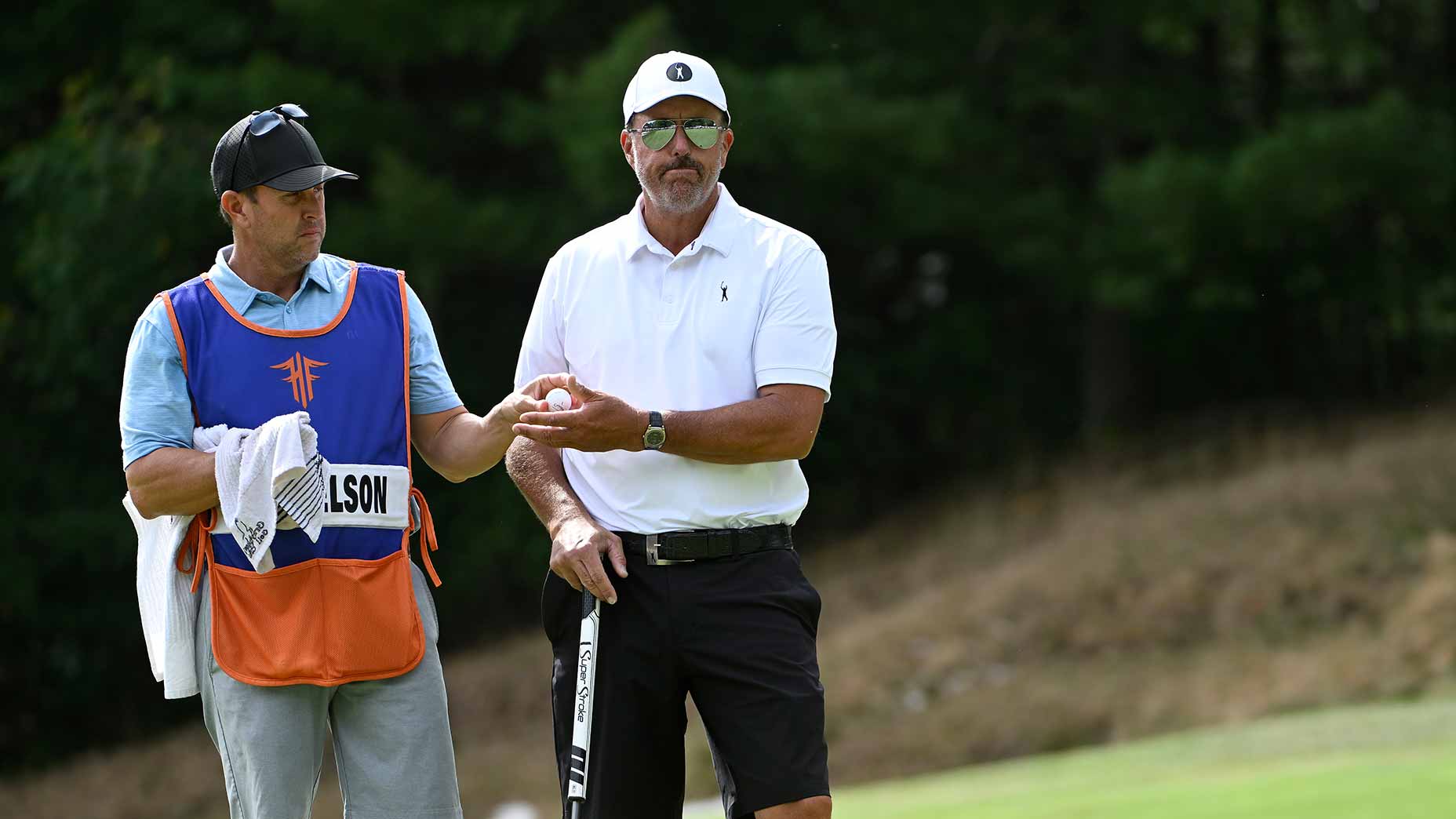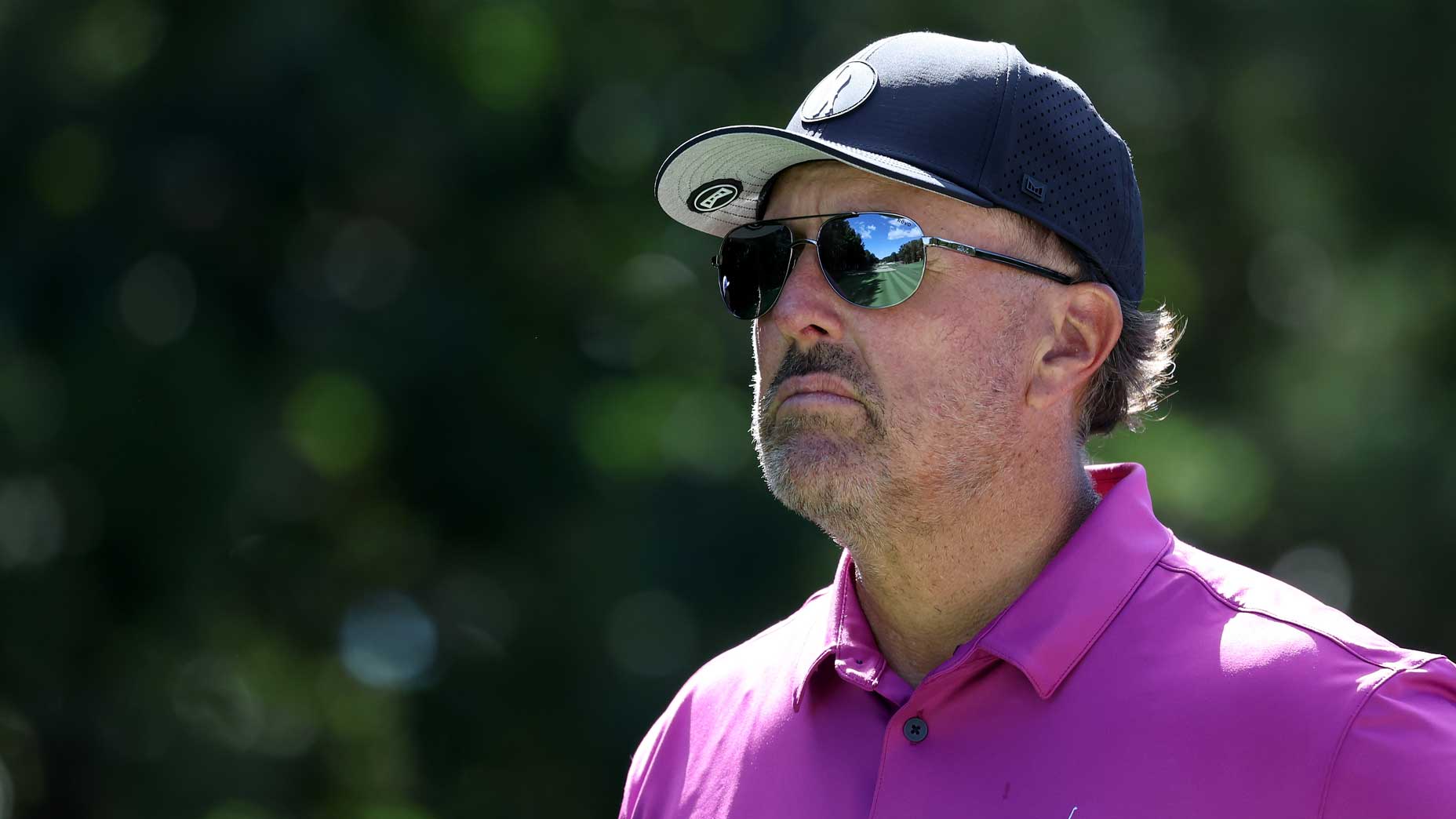MAMARONECK, N.Y. — The most intriguing character in this playing of the 120th U.S. Open? Tiger? Bryson? Rory? No, people. It’s Phil Mickelson, who’s still living down that fateful finish at the last Open at Winged Foot, in 2006. Here, with (almost) real-time updates from the ground, is how Phil fared in his first Open round at Winged Foot since:
2 p.m. PMWFT (Phil Mickelson Winged Foot Time): Last time, in 2006, he was Big Phil. He was awshucks Phil. Now he’s badass Phil, with the shades and the calves and the bombs. Oh, he bombed one on the first hole here Thursday afternoon, lefter than left. So left he drew a decent lie. He launched-and-stuffed from there and did not do the Phil nod after making his birdie 3. Not because badass Phil doesn’t acknowledge his peeps anymore. He most assuredly does. It’s just that his people are not here. No Amy. No coach. No huddled masses. Just Brother Tim on the bag, Raja Maltbie in an NBC cart in the rough and a prop plane droning overhead. Phil’s quest, at age 50, was under way. You know what we’re talking about.
2:30 PMWFT: Three is a par-3 with a fence behind the green and a suburban backyard behind the fence. On the out-of-bounds side of the fence was a small bleacher semi-filled with golf fans. Golf fans and Phil fans. You kind of hope Phil would make a 2 there, just to see if Phil would do Phil things. Alas, he lipped out for par, tapped in for 4, left the green in the same path he entered it, one shot poorer to par for his troubles.
3:15 PMWFT: Phil is playing with Paul Casey and Jon Rahm, two Europeans who logged large chunks of their adult lives in greater Phoenix. Phil’s brother and caddie, Tim, is close to Rahm. They played together in a member-guest event a while back. The players and the caddies all know each other well. All three players are talkers, or can be. But not today. Phil sets the mood for these things, just as Tiger does in his groups. A privilege of stardom. Phil was the last to come off the 5th green. The last to play off the 6th tee. The first to putt on the 7th green. That’s not good. None of that is going to encourage Phil to start pontificating about this and that. Not on a Thursday afternoon at a U.S. Open.
Phil Mickelson reveals the 2 secrets behind his weight loss transformationBy: Luke Kerr-Dineen
4 p.m. PMWFT: And now he has turned. Now Phil begins his walk to 18, where you could say his life changed, the last time he was there, in 2006. But you could also say it did not. He had a chance to win the U.S. Open. And he didn’t. That’s what this whole thing is about for Phil, trying to make up for lost chances, and for the chance in particular.
4:10 p.m PMWFT: So far, it had been, candidly, a pretty gloomy walk. Gray skies, no crowds, slightly humid, no energy, leaves showing hints of fall, hints of brown. That’s OK. Even in the best of times, U.S. Opens are not laugh riots. Phil’s front-nine card was odd but also Phil: birdie, birdie, bogey, bogey, bogey, par, par, bogey. Nine is a short par-5. He finally drove one long and in play. His second shot was hole high, almost, and on the 1st tee. Perfect lie and classic Phil. He flopped something and not particularly well. The divot went flying into the rough. Brother Tim went to look for it. Phil yanked his putter out of the bag, tossed the slippery head cover in Tim’s direction, divot in hand. He missed the birdie putt. On he went. Not that there was much of a choice in the matter.
5:30 p.m. PHMWT: No. No, no, no. Bogey on 10. Par on 11 and 12. Bogey on 13. Pars at U.S. Opens, Johnny used to like to say from his perch on high, were the good guys. Pars wore white hats. But on this day, you had to make some noise. This Thursday round was the day to make a score and there won’t be another one. Gray skies. (Easier to judge slopes and distances). Softish greens. (You could stop the ball.) Many pins that you would say, by Winged Foot standards, were not that impossible. (You actually play toward some of them.) But Phil walked to the 14th tee at four over par and knowing he would need to do something special or put himself in a place where he’ll be unlikely to make the cut. His tee shot on the par-4 14th went into a right trap with a brutal lip. His shot from there was squarely. Now Brother Tim was running again. Rake the trap. Get the bag. Get the yardage. This was not going well. This was all blah, blah, blah and yada, yada, yada. A double bogey on 14. A sagging walk to 15. No extended hands from fans. No north-pointing thumbs from Phil. No anything but a bad card in his back pocket.
‘This is a nightmare’: Reliving Phil Mickelson’s 2006 Winged Foot meltdown with those who saw it up closeBy: Ryan Asselta
6:00 PMWFT: The course was noisy, in the oddest sort of way. The droning prop plane along with an orchestra of motion. Trucks in reverse sounding something like European ambulances. TV trucks heaving with equipment. Buzzing generators in an encampment of generators. Clicking electronic scoreboards. A distant siren. The hum of a parkway. A train whistle. If Phil heard all of it or none of it as he waited on various tees you couldn’t know by watching. He certainly was trying. You never saw him make so many phantom swings in your life. Searching, searching, searching. Bogey on 15. A 4 on the par-4 16th. Now the crickets were out. Evening was descending on Winged Foot. Phil Mickelson was seven over par.
6:22 PMWFT: Phil had been playing golf for almost five hours and had just reached the 18th tee. Golf is not supposed to be such a slow sport but it is. It was 14 years and three months since he had played a tee shot from that 18th hole in competition. You likely know what happened on that long-ago Father’s Day. Thursday’s shot was meaningful or meaningless, take your pick. He hit it short and left again.
6:29 PMWFT: The lie was bad. In 2006, the lie was good and that was bad luck. It made Phil try a miracle shot. But this lie was bad. He hacked it out.
6:33 PMWFT: Phil did what Phil does. For his third he hit a high soft open-faced lob wedge from seaweed rough. He had maybe 10 feet for par. A par in 2006 would have won him the Open.
6:39 PMWFT: This painful round was fast at the end. Two putts for bogey. Phil signed for 79.
